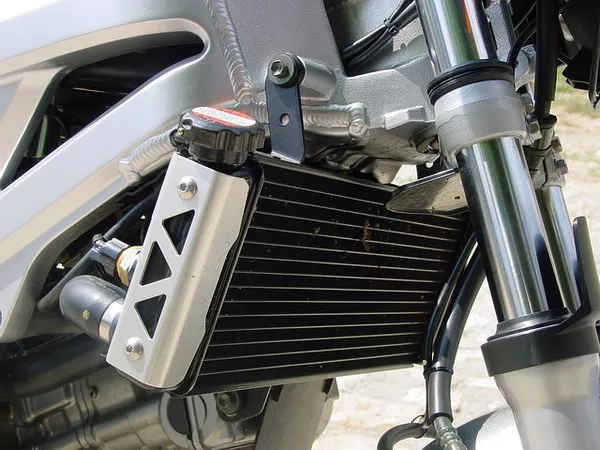In the realm of building infrastructure and environmental control, HVAC (Heating, Ventilation, and Air Conditioning) systems play a crucial role in maintaining comfort and efficiency. At the heart of many HVAC systems lies refrigeration technology, a cornerstone of modern climate control. Understanding HVAC refrigeration is key to comprehending how these systems work to regulate temperature, humidity, and air quality within residential, commercial, and industrial settings.
What is HVAC Refrigeration?
HVAC refrigeration refers to the process of cooling and dehumidifying indoor air using a closed-loop system that circulates refrigerant between various components. Unlike simple fans or heaters, refrigeration systems have intricate mechanisms designed to transfer heat from indoor spaces to the outdoors, thereby lowering the temperature inside.
Components of HVAC Refrigeration Systems
Compressor: The heart of the refrigeration cycle, the compressor pressurizes refrigerant gas, raising its temperature and pressure. This high-pressure gas then moves to the next stage of the cycle.
Condenser Coil: Located outdoors in split-system air conditioners or heat pumps (or sometimes indoors in larger systems), the condenser coil dissipates heat from the refrigerant gas, causing it to condense into a high-pressure liquid.
Expansion Valve or Capillary Tube: This component regulates the flow of high-pressure liquid refrigerant into the evaporator coil by reducing its pressure and temperature.
Evaporator Coil: Situated indoors in split-system air conditioners or heat pumps, the evaporator coil absorbs heat from indoor air, cooling it down as the refrigerant evaporates into a low-pressure gas.
Refrigerant: A special chemical fluid with properties that allow it to change state from liquid to gas and back again at relatively low temperatures. Common refrigerants include R-410A, R-22 (phased out due to environmental concerns), and newer alternatives like R-32 and R-290 (propane).
Air Handling Unit (AHU): The AHU circulates indoor air over the evaporator coil, where heat exchange occurs, cooling and dehumidifying the air before distributing it back into the building.
The Refrigeration Cycle Explained
The refrigeration cycle is a continuous process that involves the transformation of refrigerant through four main stages:
Compression: The compressor pressurizes the low-pressure refrigerant gas, raising its temperature significantly.
Condensation: The high-pressure, high-temperature refrigerant gas flows into the condenser coil, where it releases heat to the outside environment and condenses into a high-pressure liquid.
Expansion: As the high-pressure liquid refrigerant moves through the expansion valve or capillary tube, its pressure and temperature drop significantly.
Evaporation: The low-pressure liquid refrigerant enters the evaporator coil, where it absorbs heat from indoor air, causing it to evaporate into a low-pressure gas.
This cycle repeats continuously as long as the HVAC system is running, effectively cooling and dehumidifying indoor air.
Types of HVAC Refrigeration Systems
Split Systems: Common in residential and small commercial applications, split systems have components located both indoors (evaporator coil and air handler) and outdoors (condenser coil and compressor).
Packaged Systems: Entirely contained within a single unit installed outdoors, packaged systems are often used in commercial and industrial settings where space inside the building is limited.
Heat Pumps: These systems can provide both heating and cooling by reversing the refrigeration cycle. In cooling mode, heat is transferred from indoors to outdoors; in heating mode, the process is reversed to extract heat from outdoor air and transfer it indoors.
Variable Refrigerant Flow (VRF) Systems: Found in larger buildings, VRF systems use advanced technology to vary the flow of refrigerant to individual indoor units, providing precise control over temperature in different zones.
Importance of Proper Refrigerant Management
The type and management of refrigerants used in HVAC systems are critical considerations due to environmental concerns. Older refrigerants like R-22 (chlorofluorocarbon) have been phased out globally due to their ozone-depleting properties. Modern refrigerants like R-410A and R-32 are designed to be more environmentally friendly, with lower global warming potential (GWP). Proper handling, disposal, and leak prevention are essential to minimize environmental impact and comply with regulations such as the Montreal Protocol and its amendments.
Efficiency and Energy Considerations
HVAC refrigeration systems account for a significant portion of a building’s energy consumption. To improve efficiency and reduce operating costs, advancements such as variable-speed compressors, energy-efficient motors, and smart controls have been integrated into modern systems. Regular maintenance, including cleaning coils, checking refrigerant levels, and inspecting ductwork, helps ensure optimal performance and longevity of HVAC equipment.
Challenges and Innovations in HVAC Refrigeration
Energy Efficiency: Continual advancements in compressor technology, heat exchangers, and refrigerant management aim to enhance energy efficiency and reduce operational costs.
Environmental Impact: The transition to environmentally friendly refrigerants and the development of alternative cooling technologies (such as magnetic cooling and thermoelectric cooling) are ongoing efforts to mitigate environmental impact.
Smart HVAC Systems: Integration with building automation systems (BAS) and IoT (Internet of Things) technology allows for remote monitoring, predictive maintenance, and adaptive control of HVAC systems, optimizing comfort and energy use.
Resilience and Reliability: Designing HVAC systems to withstand extreme weather events and ensuring redundancy in critical components (such as backup power and dual refrigerant circuits) are crucial for maintaining indoor comfort in all conditions.
See Also 3 TYPES OF REFRIGERATION SYSTEMS
Conclusion
HVAC refrigeration systems are indispensable for maintaining comfortable and healthy indoor environments across various sectors. Understanding the principles and components of refrigeration technology is essential for HVAC professionals, building managers, and anyone involved in the design, installation, or maintenance of climate control systems. As technology continues to evolve, so too will HVAC refrigeration systems, adapting to meet the challenges of energy efficiency, environmental sustainability, and the demands of modern building design.


